-15% off your first order*.
Enter your email address to receive your promo code.
*except for the SAFEFIT airbag
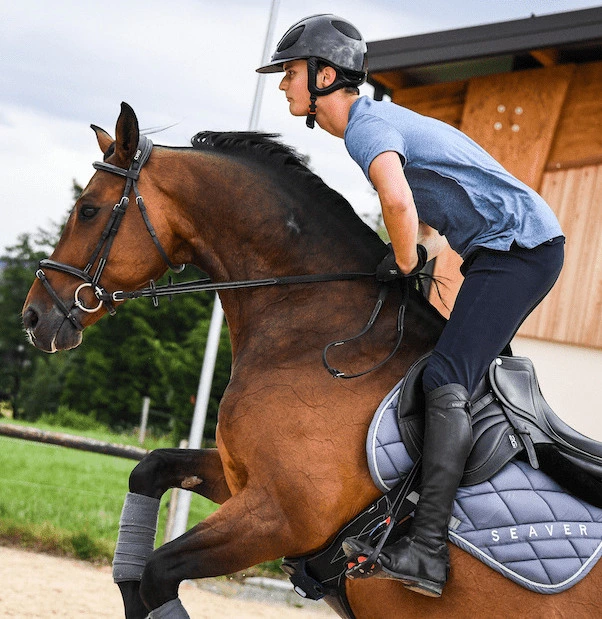
Wednesday, April 4th, 2018
How to improve the horse's cardio? After a winter break and before starting specific work on the horse, the development of the cardio-respiratory system is often a key step in achieving optimal physical condition.
In this article you will find 3 sessions that will help you to work on your horse's cardio-respiratory system, and in particular on fundamental endurance.
This cardio-respiratory solicitation will allow essential physiological adaptations to be obtained, such as
Muscling your heart is in fact making it adapt to the effort by increasing the blood flow that it will be able to process with each beat. The more your horse progresses, the more efficient its heart becomes, i.e. as it becomes more muscular it will need to beat less quickly to deliver the same amount of "fresh" blood to the whole body and in particular to the muscles. This means that the muscles will have more fresh oxygen available and can produce more energy through the aerobic pathway.
Cardiorespiratory training develops efficient capillaries within the muscles. These vessels deliver a greater quantity of oxygen to muscle cells. It also increases the number of mitochondria. The mitochondrion is considered the cell's "energy powerhouse", since it is here that the final steps take place to transform the energy of organic molecules produced by digestion (glucose) into energy that can be directly used by the cell (ATP).
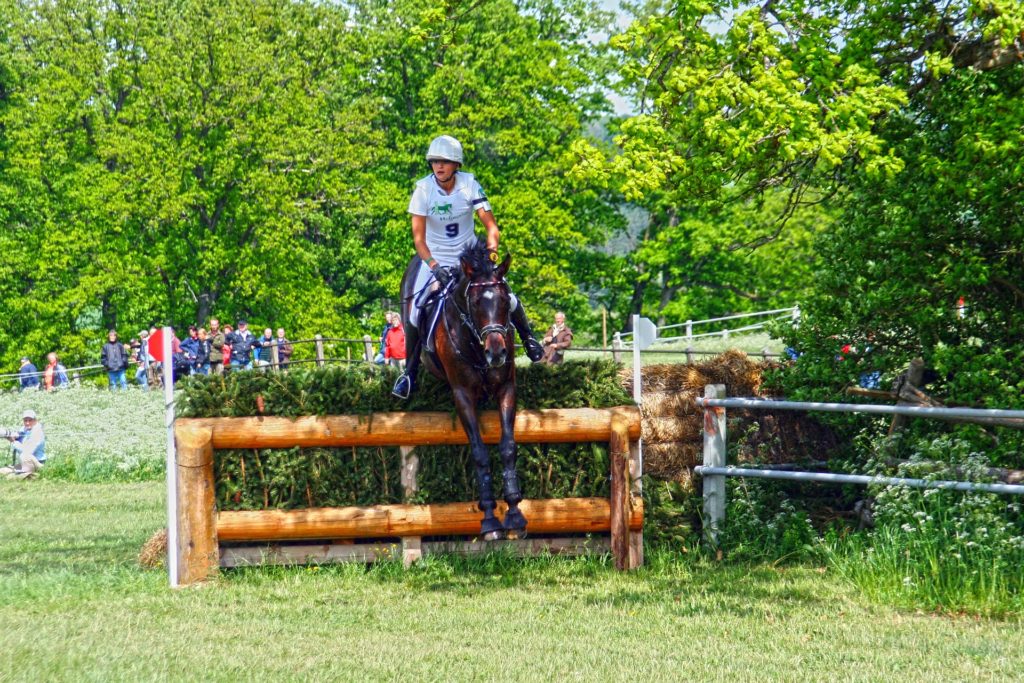
During endurance training, the horse's aerobic system (use of oxygen as the main source of energy) becomes more efficient. As a result, his intramuscular energy reserves, in the form of muscle glycogen, are spared to a greater extent at moderate paces, and are depleted less rapidly if the effort is sustained over time. With training, the horse will be able to preserve its stocks of immediately available energy for a final sprint or any punctual acceleration.
Cardiorespiratory training also helps to develop the body's recovery capacity to make it better able to withstand training loads.
"Just because two horses are making the same effort at the same heart rate doesn't mean they're working as hard as each other!" - Dr. J. Guillaume
Dr. Justine Guillaume shares her secrets and tips for training your horse's fundamental endurance over 3 sessions.
Fundamental endurance training involves working the heart-lung system to improve the way your horse uses oxygen. Training him in fundamental endurance means working him at heart rates below 70% of his maximum heart rate (FCMax). Working in this zone will enable him to optimize the use of oxygen by his muscles, gradually lowering his exercise and resting heart rates.
To incorporate fun into this exercise, don't hesitate to go outside and take advantage of the differences in level that the environment can offer. In addition to effectively stimulating the cardio-respiratory system, the mind will thank you!
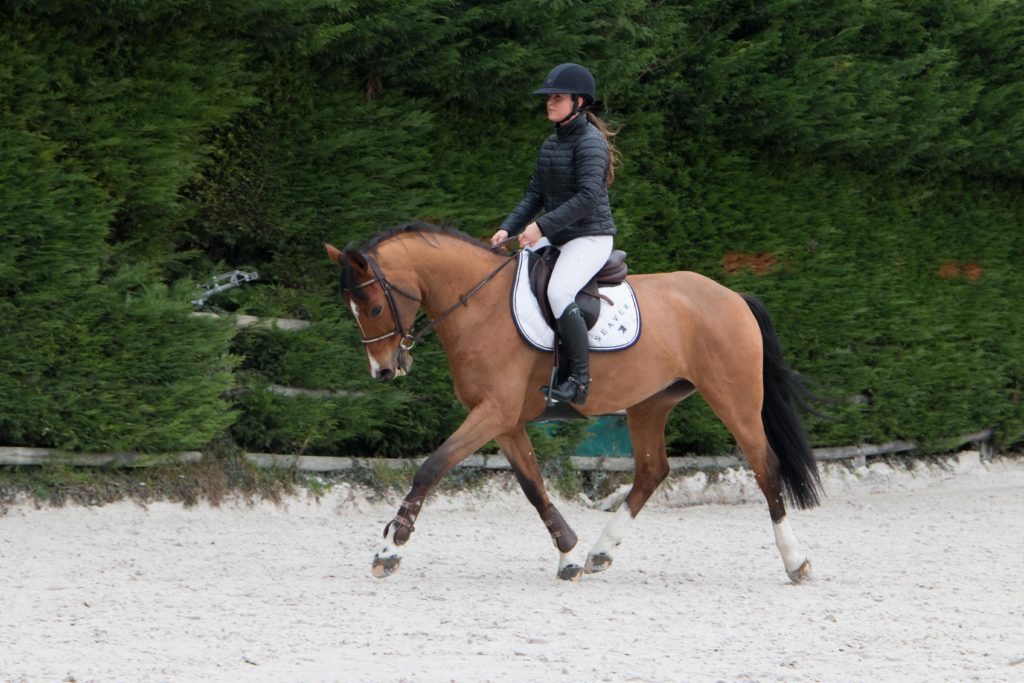
Start with 10 minutes of walking followed by slow trotting phases to begin your session. During this warm-up phase, it is advisable to start without any mechanical stress on the horse. Remember that the objective is to warm up the "mechanics".
If you are working in the arena, you can perform figures such as voltes, voltes inversées, then initiate some mobilisation exercises (hips, shoulders) at the end of the warm-up. The aim is to make your horse available and willing to listen. The best thing is of course to obtain this state in a relaxed way!
Follow this with slow/medium speed trotting phases (approx. 13 - 16 km/h), which should last 5 - 8 minutes. Your horse's heart rate should not exceed 150-160 bpm (about 60% of its FCmax*).
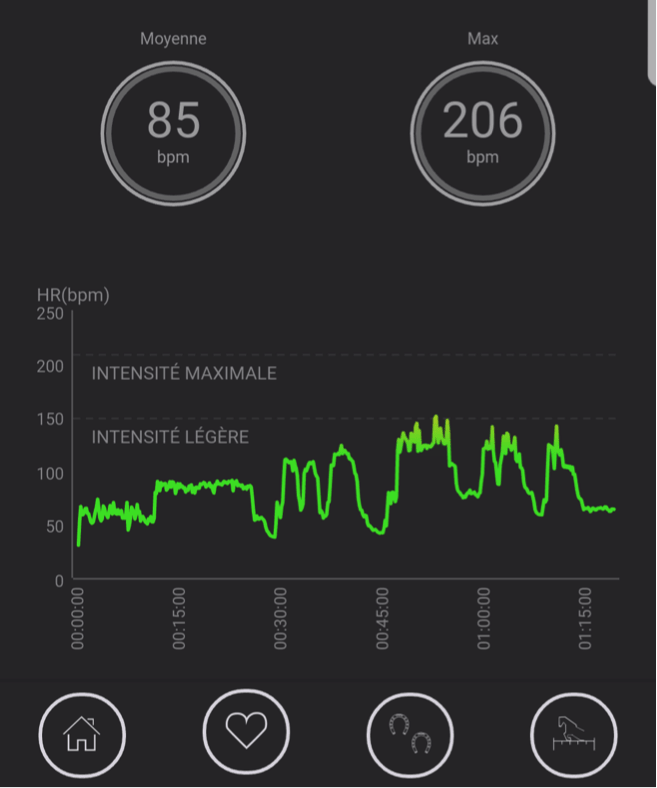
Remember to allow time for recovery at the walk with long reins between each trotting phase. The duration of these recovery phases should be at least 2 minutes.
Next, work your horse in a canter. Prefer slow and calm canters. Do at least 3 canter phases in the session and make sure you don't go over 23-24 km/h. If you are working in the arena, remember to vary the figures!
Finally, end your session with a recovery phase. It is important to end your session on a positive and relaxed note. Recovery should start with a slow trot (about 10 km/h) and then walk, long reins if possible! In winter, don't forget to cover your horse's loins when walking!
To know more!
* The average maximum heart rate of a horse is between 195-240 beats per minute. The FCmax decreases with age and is specific to each horse. It is therefore recommended to measure it with an exercise test to be more precise!
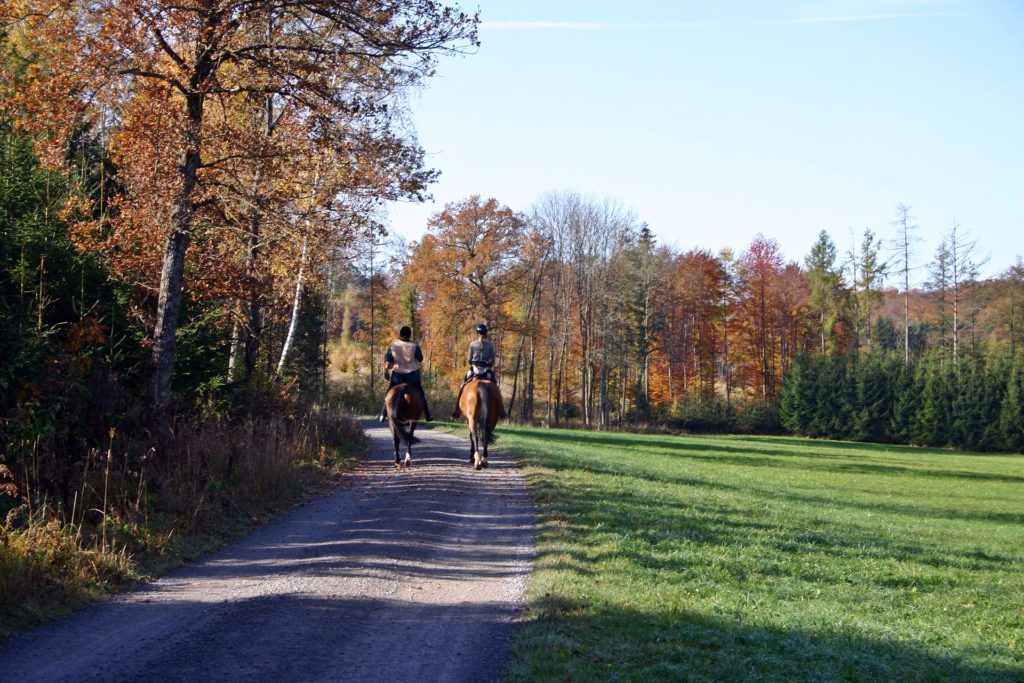
This session should be done outdoors! Locate a large hill in the vicinity, ideally 1 km of hill, which will be your work tool for this session.
After a 15-20 minute warm-up phase in the arena or in a field, for example, you can head for the hill. During this warm-up phase, let your horse walk and trot without constraint. The objective of this session is not technical work but the bottom!
Start the climb at a slow trot (12-14 km/h) and try to maintain a constant pace throughout the climb.
If your horse's physical condition does not allow it to trot the entire hill, you can divide it into three zones:
There are several indicators that will help you to assess this; your horse's breathing, his perspiration and most importantly his heart rate!
Note: It will be normal to observe a significant rise in heart rate on the hill even at a slow trot (up to 180-190 bpm).
Finally, finish this session with a recovery phase, first at a trot and then at a walk with long reins.
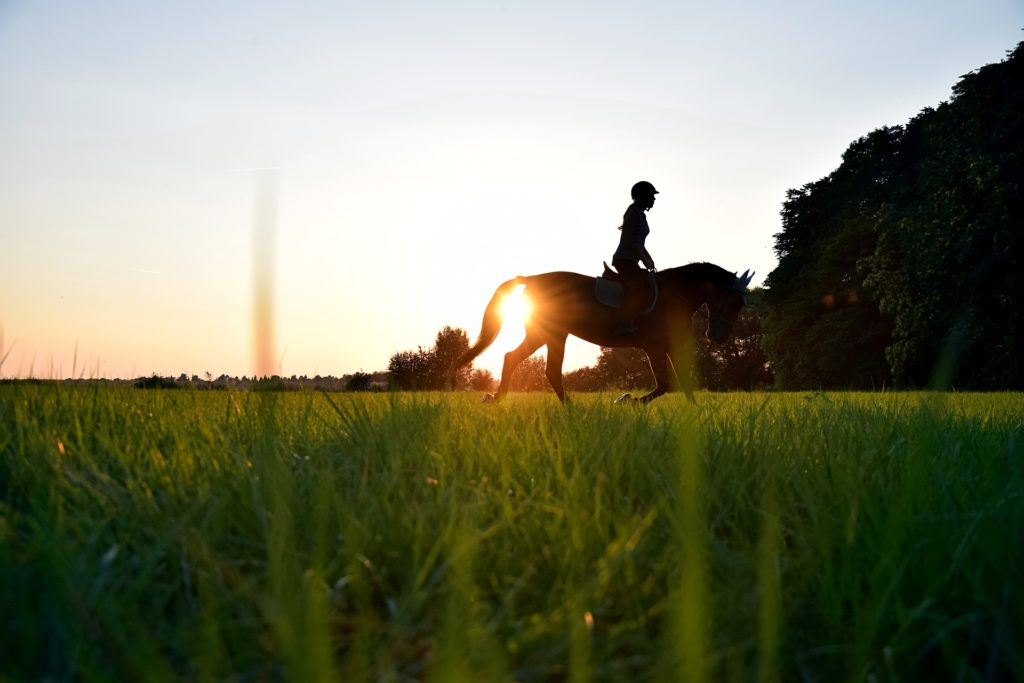
This last session can be done outdoors or in a quarry. If you are outdoors, find an area that allows you to trot for at least 20 minutes at a time. Alternatively, you can go to a quarry for this part of the session.
Warm up with walking: start by walking for 5 minutes at a 'normal' pace, then finish this phase with one minute of active walking. If you are working in a quarry, remember to vary the figures (circles, hip and shoulder movements, etc.).
Ensuite, effectuez deux séries de trot à une vitesse lente (< 13 km/h) pendant 20 minutes chacune. Entre ces deux séries, pensez à aménager une phase de récupération de 5-6 minutes au pas, rênes longues.
Finally, finish this session with a recovery phase in walk, long reins.
Tip!
To make this session more complex, never increase the speed! Instead, you can do 23-25 minute sets of trots, or 3 sets of 15 minutes.
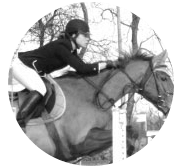 |
Dr. Justine Guillaume Ph.D Equine Nutrition & |
Justine Guillaume has been a rider and horse owner for 20 years. She has a doctorate in nutrition for the horse athlete and wishes to combine the physiology of the horse's effort, nutrition and performance in order to rationalise and objectify training.
Today, she is assistant manager and in charge of scientific and technical affairs at Pommier Nutrition, manufacturer and distributor of complementary feeds for horses, and has developed an entity called Equine Performance Solutions, which consists of support in terms of physical preparation for horses.
For her, physical preparation isn't just about massages and wellness treatments. It's much more than that! Above all, it's about preparing the body to perform while preserving its physical integrity. It's a complementary activity, which the trainer must use to get to know his athletes better and find out whether his training is effective. Above all, it's about evaluating the horse and its physical qualities, using stress tests to determine whether training is effective and the horse is progressing, or whether it's over-trained or under-trained...
" The new connected tools allow access to a small part of their 'inside', a mine of information! " - Dr. J. Guillaume
See you soon!
-The Seaver team